The Green Bay Packers have been the gold standard for high-quality quarterback play over the past few decades, but their strong track record with signal-callers dates all the way back to before the Allies defeated the Axis in World War II.

Created in 1921, the Packers have won more NFL championships (13) than any other franchise in the league. They claimed three in the early 1930s when the postseason consisted of the two best teams battling it out in the NFL championship game, then won another 10 titles once the NFL moved into an expanded playoff structure in 1967.
During that time, quarterback play was one of the driving forces behind the Packers’ success, including in the 2011 Super Bowl when they defeated the Pittsburgh Steelers to win their most recent championship following the 2010 season. Several of them have even made it into the Pro Football Hall of Fame — with at least one awaiting enshrinement.
Here’s a look at the 10 best quarterbacks in the history of the Packers franchise:
*Note: All titles, awards and stats listed below are from each player’s tenure with the Packers only. All stats are from Pro Football Reference unless otherwise stated.
10. Matt Flynn
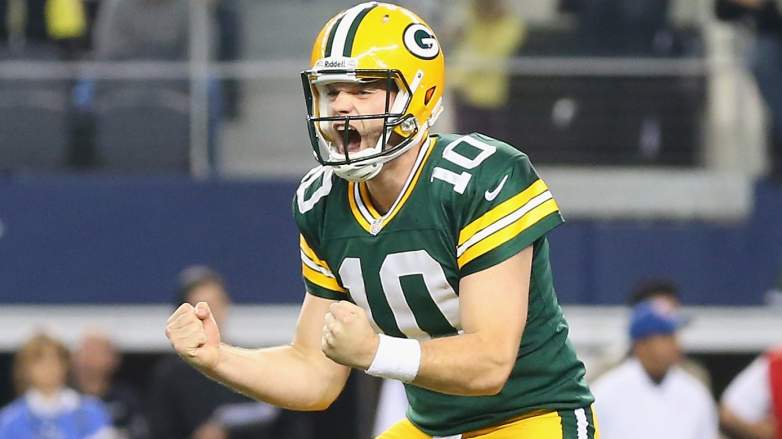
GettyFormer Packers quarterback
Year as a Packer: 2008-2011 Titles & awards: Super Bowl champion Career regular-season stats: 3-3 record as a starter 61.1 completion percentage 2,227 passing yards 16 passing TDs 10 INTs 70 rushing yards 1 rushing TD Iconic performance: January 1, 2012, against the Detroit Lions. Flynn played out of his mind, completing 70.4% of his passes (31 of 44) for 480 yards, six touchdowns and one interception in an electrifying 45-41 victory over the Lions in front of 70,294 fans.
Flynn never became more than Aaron Rodgers‘ backup during his career, but he still delivered some memorable performances for the Packers both as an end-of-season reliever and an injury replacement for Rodgers. He threw three or more touchdowns in three of his six total starts for the Packers and turned his success with the Packers into a three-year, $20.5 million contract with the Seattle Seahawks during the 2022 offseason. If you exclude Rodgers’ final backup in Green Bay, Flynn was his greatest No. 2.
9. Jordan Love
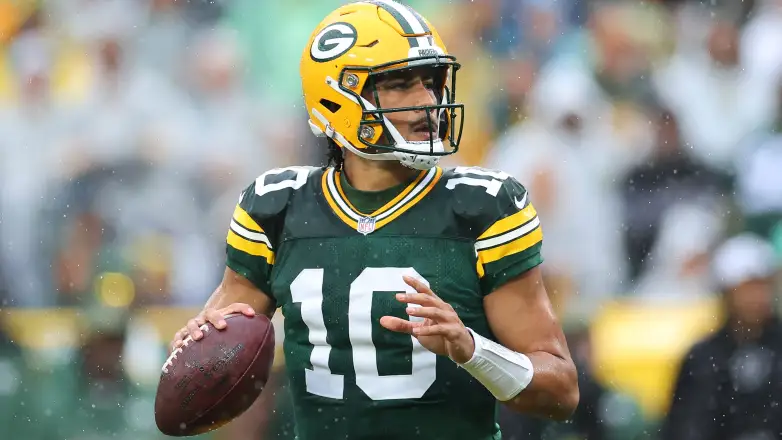
GettyPackers quarterback Jordan Love.
Year as a Packer: 2020-present Career regular-season stats: 10-11 record as a starter 62.6 completion percentage 5,638 passing yards 43 passing TDs 19 INTs 289 rushing yards 4 rushing TDs Career postseason stats: 1-1 record as a starter 67.3 completion percentage 466 passing yards 5 passing TDs 2 INTs Iconic performance: January 7, 2024, at the Chicago Bears. After knocking off the Bears in his first game as a full-time starter, Love completed 84.3% of his passes (27 of 32) for 316 yards and 2 touchdowns to help the Packers win 17-9 and sweep the Bears.
Jordan Love‘s inclusion on the list might strike some as odd considering he’s only in his second season as a full-time starter for the Packers, but Love’s success in 2023 persuaded the Packers to make him the highest-paid quarterback in the league (at the time) during the 2024 offseason and lock him into place as their long-term successor to Rodgers. Love is also 11th in passing yards and ninth in passing touchdowns on the Packers’ all-time list, which is remarkable given that he is only just getting started. Don’t be surprised if Love justifies a higher placement on a list of the Packers’ best QBs in the coming years.
8. Cecil Isbell

Heavy on Packers with AICecil Isbell likeness.
Year as a Packer: 1938-1942 Titles & awards: NFL champion First-team All-Pro (1941) Second-team All-Pro (1938-1940, 1942) Four-time Pro Bowler (1938-1939, 1941-1942) NFL passing touchdown leader (1941-1942) NFL passing yards leader (1941-1942) Career regular-season stats: 40-12-2 record as a player 50.2 completion percentage 5,945 passing yards 61 passing TDs 52 INTs 1,522 rushing yards 10 rushing TDs Career postseason stats: 1-2 record as a player 50.0 completion percentage 235 passing yards 2 passing TDs 1 INT Iconic performance: November 1, 1942, against the then-Chicago Cardinals. Isbell completed 10 of 21 passes for 333 yards and 5 touchdowns in the 55-24 victory.
Both an accomplished passer and tailback, Isbell was one of the finest quarterbacks of the NFL’s Iron Man era, during which players were expected to play both offense and defense for their teams. He won more than a dozen awards over his short five-season career and built his reputation on his short touch and accuracy. Packers co-founder Curly Lambeau once called him “a master at any range — short, medium or long.”
Isbell also blazed a trail as one of the Packers’ first dual-threat quarterbacks, finishing with the fourth-most rushing yards (457) and fifth-most passing yards (659) in the NFL during his 1938 rookie season despite playing behind Arnie Herber. He went on to lead the league in passing in both 1941 and 1942 after the team waived Herber and earned the distinction of being the first NFL quarterback to throw for 2,000 yards in 1942. Had his career not been so short, he would have likely been a Hall of Fame inductee.
7. Tobin Rote

GettyFormer Packers quarterback Tobin Rote.
Year as a Packer: 1950-1956 Titles & awards: Second-team All-Pro (1955, 1956) Pro Bowler (1956) NFL passing yards leader (1956) NFL passing touchdown leader (1955, 1956) NFL passing rating leader (1952) Career regular-season stats: 26-46-1 record as a starter 44.6 completion percentage 11,535 passing yards 89 passing TDs 119 INTs 2,205 rushing yards 29 rushing TDs Iconic performance: October 17, 1954, against the Los Angeles Rams. Rote went 21-of-37 passing for 284 yards, 3 touchdowns and 1 interception in the 35-17 win.
Rote might not have stacked up wins throughout his tenure with the Packers, but there was no denying his rare athleticism. The 6-foot-2, 211-pound quarterback had throw power, speed and instincts that kept him ahead of the curve and allowed him to punish NFL defenses that tried to keep up. He had the most rushing yards among all league quarterbacks in each of his final three seasons in Green Bay (1954-1956) and also led the league in passing yards (2,203) and passing touchdowns (18) during his last year with the team in 1956, earning his first career Pro Bowl honors. While inconsistency and the lack of wins sometimes push Rote’s accomplishments into the footnotes of the history books, he possessed an innate ability to take over games, one that is difficult to forget for anyone from his era who watched him play.
6. Arnie Herber

Wikimedia CommonsFormer Packers quarterback Arnie Herber.
Year as a Packer: 1930-1940 Titles & awards: NFL champion (1930-1931, 1936, 1939) First-team All-Pro (1932) Second-team All-Pro (1935-1936) NFL All-Star (1939) NFL passing yards leader (1932, 1934, 1936) NFL passing touchdowns leader (1932, 1934, 1936) NFL passing rating leader (1934, 1936, 1939) NFL completion percentage leader (1936) Career regular-season stats: 68-33-5 as a player 40.9 completion percentage 8,041 passing yards 81 passing TDs 106 INTs 116 rushing yards 3 rushing TDs Career postseason stats: 1-1 record as a starter 41.3 completion percentage 431 passing yards 4 passing TDs 8 INTs Iconic performance: December 13, 1936, at the then-Boston Patriots in the NFL Championship Game. Herber completed just 6 of his 14 passes for 129 yards, 2 touchdowns and 1 interception to lead the Packers to a 21-6 title victory.
Herber is sometimes forgotten behind the Packers’ holy trinity of Bart Starr, Brett Favre and Aaron Rodgers because he did the majority of his passing from the halfback spot in Curly Lambeau’s Notre Dame Box offense, but he was quite accomplished for his era. Before Isbell became the first NFL quarterback to exceed 2,000 passing yards, Herber became the first to throw for more than 1,000 yards in 1936 while helping the Packers to their fourth NFL title. He thrice led the league in passing yards and touchdowns and formed one of the NFL’s marquee tandems alongside prolific wide receiver Don Hutson. When Hutson departed from the Packers in 1941, he owned the NFL record for the most passing yards (6,741) — excluding his first two seasons, during which the league had not yet started officially keeping statistics, according to the Packers’ team website.
5. Don Majkowski
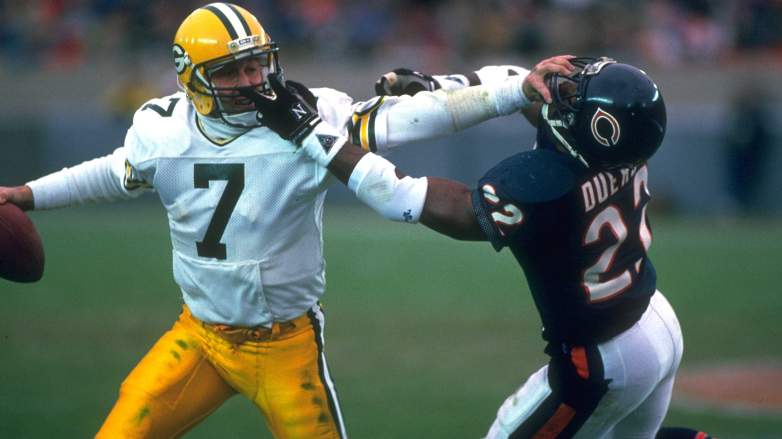
GettyFormer Packers quarterback Don Majkowski.
Year as a Packer: 1987-1992 Titles & awards: Second-team All-Pro (1989) Pro Bowler (1989) NFL passing yards leader (1989) Career regular-season stats: 26-30-1 record as a starter 55.4 completion percentage 12,700 passing yards 66 passing TDs 67 INTs 1,114 rushing yards 12 rushing TDs Career postseason stats: 0-1 record as a player 60.9 completion percentage 206 passing yards 3 passing TDs 2 INTs Iconic performance: November 5, 1989, against the Chicago Bears. Majkowski earned his nickname “Majik Man” after a stunning finish against the Bears, completing 23 of his 40 passes for 229 yards, 2 touchdowns and 1 interception in the 14-13 win.
Majkowski didn’t step into a championship juggernaut like some of the great Packers quarterbacks who preceded him. He was also not a world-beater in terms of his arm and overall passing talent, but that’s part of what made him so electric to watch. He helped take the Packers from the basement of the NFL (4-12 in 1988) to the cusp of a division title (10-7 in 1989), earning the moniker of “Majik Man” for his heroic efforts and thrilling comeback victories against the competition. Many thought he would ascend the ladder of great NFL quarterbacks after his Pro Bowl season in 1989, but a contract dispute and injuries derailed his next few seasons until the Packers acquired Brett Favre — marking the end of the “Majik” era for Green Bay.
4. Lynn Dickey

Wikimedia CommonsFormer Packers quarterback Lynn Dickey.
Year as a Packer: 1976-1985 Titles & awards: NFL passing touchdown leader (1983) NFL passing yards leader (1983) Career regular-season stats: 45-56-2 record as a starter 56.2 completion percentage 21,396 passing yards 133 passing TDs 151 INTs 98 rushing yards 9 rushing TDs Career postseason stats: 1-1 record as a starter 61.0 completion percentage 592 passing yards 5 passing TDs 3 INTs Iconic performance: September 4, 1983, at the then-Houston Oilers. Dickey went 27-of-31 passing for 333 yards with 5 touchdowns and 1 interception in the 41-38 win, playing through an excruciating headache due to spinal fluid leaking into his brain.
Dickey ran into trouble when pressured or forced to move outside of the pocket during his nine seasons with the Packers, but he was sensational at making just about any type of throw when given the time to deliver. While the modern greats have raised the bar, Dickey became one of the best long-ball passers in team history when he took over the starting job in 1976 and had better touch and accuracy than his completion percentage (52.6) with the Packers leads one to believe. He could also read defense with the best of them, using his smarts to audible the Packers into more successful looks regularly. Had Dickey’s supporting cast been stronger, he might have cracked the team’s top three.
3. Brett Favre
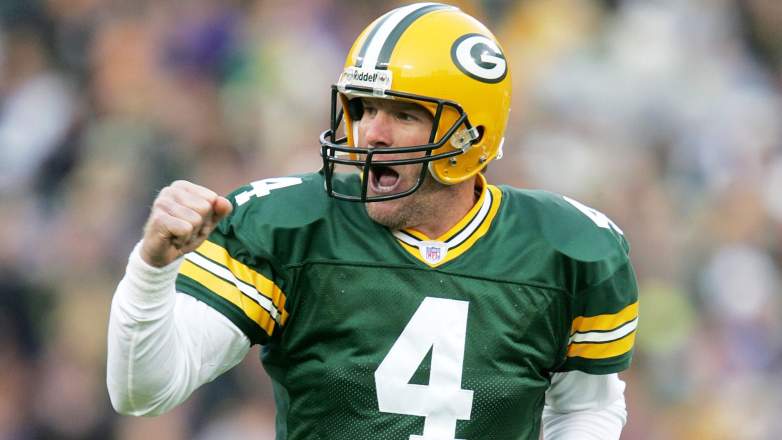
GettyFormer Packers quarterback Brett Favre.
Year as a Packer: 1992-2007 Titles & awards: Super Bowl champion Three-time NFL MVP (1995-1997) NFL Offensive Player of the Year (1995) First-team All-Pro (1995-1997) Second-team All-Pro (2001, 2002, 2007) 11-time Pro Bowler (1992-1993, 1995-1997, 2001-2003, 2007-2009) NFL passing touchdown leader (1995-1997, 2003) NFL passing yards leader (1995, 1998) NFL completion percentage leader (1998) Bert Bell Award winner (1995, 1996) Career regular-season stats: 160-93 record as a starter 61.4 completion percentage 61,655 passing yards 442 passing TDs 286 INTs 1,786 rushing yards 13 rushing TDs Career postseason stats: 12-10 record as a starter 60.7 completion percentage 5,311 passing yards 39 passing TDs 28 INTs 72 rushing yards 1 rushing TD Iconic performance: December 22, 2003, against the then-Oakland Raiders. One day after his father’s death, Favre played one of the most outstanding games of his career on Monday Night Football, throwing for 399 yards and 4 touchdowns in the 41-7 victory.
The great Gunslinger of Green Bay, Favre is most often remembered for his whatever-it-takes attitude as a competitor and his cannon of an arm that helped him win three consecutive NFL Most Valuable Player awards during his time with the Packers. To this day, he is still the winningest quarterback in team history (160 wins) and has more career passing yards (61,655 yards) than anyone else who has ever won the Packers uniform, including successor Aaron Rodgers. He also holds the league ironman record for 297 consecutive starts, a mark that is nearly 30 games ahead of the rest of the field.
While Favre was turnover-prone and is the only NFL quarterback who has ever thrown 300 or more interceptions in his career (336 in his career), his perseverance and hyper-focused demeanor in games won him the locker room and inspired his teammates to rise to greater heights alongside him, solidifying his place as one of the all-time greats.
2. Bart Starr
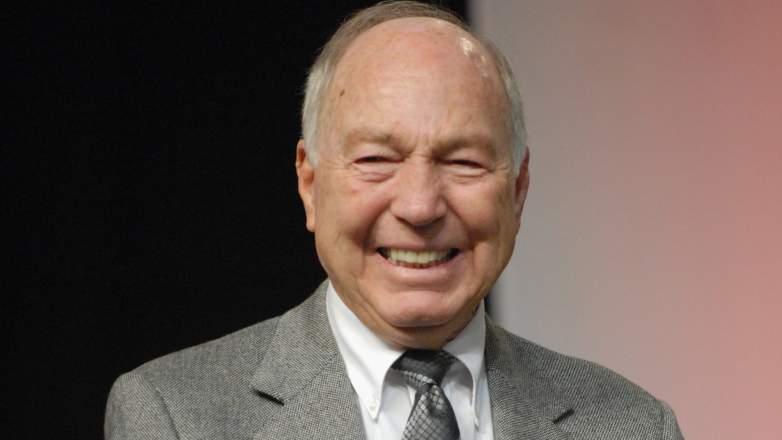
GettyFormer Packers quarterback Bart Starr.
Year as a Packer: 1956-1971 Titles & awards: 2-time Super Bowl champion 2-time Super Bowl MVP 5-time NFL champion (1961, 1962, 1965-1967) NFL MVP (1966) First-team All-Pro (1966) Second-team All-Pro (1961, 1962, 1964) 4-time Pro Bowler (1960-1962, 1966) NFL passer rating leader (1964, 1966, 1968, 1969) NFL completion percentage leader (1962, 1966, 1968, 1969) Career regular-season stats: 94-57-6 record as a starter 57.4 completion percentage 24,718 passing yards 152 passing TDs 138 INTs 1,308 rushing yards 15 rushing TDs Career postseason stats: 9-1 record as a starter 61.0 completion percentage 1,753 passing yards 15 passing TDs 3 INTs 26 rushing yards 1 rushing TD Iconic performance: December 31, 1967, against the Dallas Cowboys. He completed 14 of his 24 passes for 191 yards and 2 touchdowns and scored another touchdown on a famed quarterback sneak to help the Packers knock off the Cowboys in the Ice Bowl.
Starr did not dominate the passing statistics as fiercely as Favre the Gunslinger, but his ability to guide the Packers to victory makes him the unquestioned No. 2 selection on the Packers’ list of all-time great quarterbacks. He operated at the helm of one of coach Vince Lombardi’s best-ever Packers teams in 1962 and helped bring seven total titles to the franchise, winning five NFL championships along with the first two Super Bowls in NFL history. His aforementioned quarterback sneak that won the Packers the Ice Bowl over the Cowboys is also remembered as one of the greatest plays in league history.
While Starr’s modern-day successors broke most of his passing records, he was plenty productive as a passer, leading the NFL in passer rating and completion percentage in four seasons each. He also managed to achieve success as a quarterback while never throwing more than 300 passes in a single season, emphasizing his ability to make the most of his playmakers and orchestrate a balanced offensive attack. It only adds to his legacy that he went on to coach and manage the Packers once he retired in 1971.
1. Aaron Rodgers
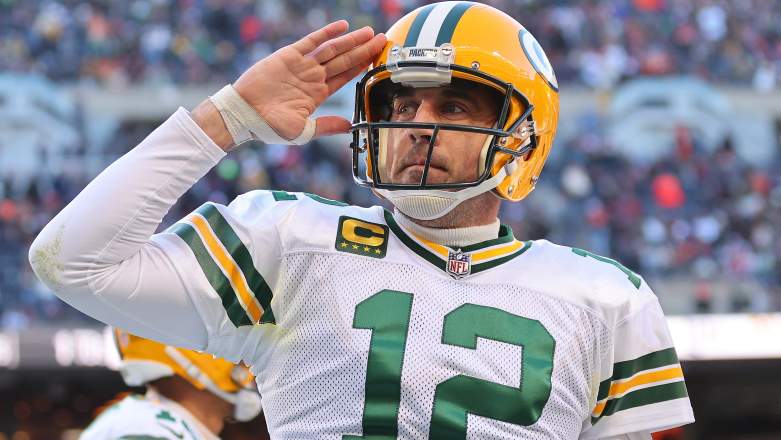
GettyFormer Packers quarterback Aaron Rodgers.
Year as a Packer: 2005-2022 Titles & awards: Super Bowl champion (2011) Super Bowl MVP (2011) 4-time NFL MVP (2011, 2014, 2020, 2021) First-team All-Pro (2011, 2014, 2020, 2021) Second-team All-Pro (2012) 10-Time Pro Bowler (2009, 2011-12, 2014-16, 2018-2021) NFL passer rating leader (2011, 2012, 2020, 2021) NFL passing touchdown leader (2016, 2020) NFL completion percentage leader (2020) Career regular-season stats: 147-75-1 record as a starter 65.3 completion percentage 59,055 passing yards 475 passing TDs 105 INTs 3,466 rushing yards 35 rushing TDs Career postseason stats: 11-10 record as a starter 64.7 completion percentage 5,894 passing yards 45 passing TDs 13 INTs 220 rushing yards 3 rushing TDs Iconic performance: February 6, 2011, against the Pittsburgh Steelers in Super Bowl XLV. While Rodgers had many iconic performances during his time in Green Bay, none touches his lone Super Bowl performance. He went 24-of-39 passing for 304 yards and 3 touchdowns, leading the Packers to a 31-25 victory over the Steelers.
The Packers have been blessed with multiple successful quarterbacks over the past few decades, but Rodgers takes the cake against stiff competition from Starr and Favre. He played for the Packers longer than both of his predecessors and ranked No. 1 in NFL history with the best touchdown-to-interception ratio (4.52) and lowest interception percentage (1.37%) in 2023 when he departed for the New York Jets. He also claimed four total MVP awards, including two in consecutive seasons after the Packers drafted Love to be his successor in the 2020 NFL draft. Nostalgia could sway this No. 1 choice for diehard Packers fans, but the numbers support Rodgers as the Packers’ best QB.